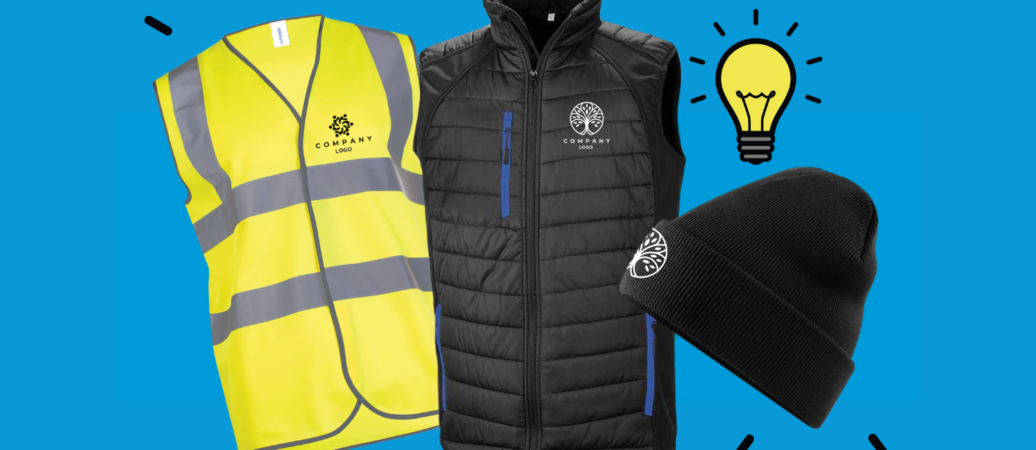The Best Fabrics to Look for in Branded Clothing for Summer
The Best Fabrics to Look for in Branded Clothing for Summer
Blog Article
Comprehending Garments: The Relevance of Material Selections in Your Closet
The selection of fabric in garments plays a crucial function in both aesthetic appeals and performance. Various materials offer differing degrees of breathability, resilience, and convenience, directly influencing the wearer's experience. Recognizing these subtleties can improve one's closet noticeably. Yet, many forget just how these choices can impact not just individual style, yet additionally sustainability. What fabric decisions could redefine your closet and straighten it with both design and duty?
The Function of Fabric in vogue and Capability

Typical Textile Kinds and Their Characteristics
When choosing clothes, understanding the attributes of typical textile types is important for making educated choices. Cotton, a widely-used all-natural fiber, is recognized for its breathability, softness, and flexibility, making it appropriate for casual wear and daily garments. Bed linen, one more natural option, boasts excellent moisture-wicking residential or commercial properties and a distinctive texture, perfect for cozy climates.Wool, frequently favored for its heat and resilience, varies in fineness; merino woollen is soft against the skin, while coarser types are used for outerwear. Synthetic fabrics like polyester and nylon supply toughness and resistance to wrinkles, making them popular for activewear and traveling garments. Ultimately, blends, which integrate all-natural and synthetic fibers, can enhance functionality while preserving convenience. By identifying these material features, people can select apparel that aligns with their way of life and aesthetic preferences.
Breathability and Comfort: Picking the Right Fabrics for Different Environments
Selecting the right fabrics for various environments can considerably improve convenience and total wearability. Breathable products are necessary in hot climates, as they enable air flow and moisture evaporation. Fabrics such as cotton, linen, and moisture-wicking synthetics successfully draw sweat far from the body, keeping the wearer cool and completely dry. Alternatively, in chillier environments, thicker fabrics like woollen or fleece provide insulation while preserving breathability, making certain heat without overheating.Additionally, the choice of textile weight plays an essential role; lightweight textiles are preferable for summertime, whereas heavier choices are suited for winter wear. Recognizing the unique homes of each textile allows people to clothe properly for varying climate condition. Ultimately, picking breathable and comfy materials customized to certain climates can significantly enhance everyday convenience and boost the overall experience of using clothes.
Sturdiness and Treatment: Just How Fabric Influences Longevity of Your Closet
Picking the best products can significantly affect the resilience and care needs of a closet. Fabrics such as cotton and polyester are recognized for their durability and ease of maintenance, making them excellent for everyday wear. In comparison, delicate products like silk and lace need even more mindful handling and specialized cleansing methods, which can enhance the moment and effort required for care. Branded Clothing.Durability is likewise influenced by the fabric's weave and surface; securely woven materials have a tendency to withstand wear and tear far better than loosely woven alternatives. In addition, artificial blends often provide enhanced toughness, integrating the most effective high qualities of multiple fibers.Understanding the care instructions for each and every textile is crucial, as incorrect cleaning or drying can bring about premature wear. Eventually, selecting durable products can lead to a longer-lasting wardrobe, decreasing the regularity of substitutes and adding to an extra sustainable fashion option
The Effect of Fabric on Fit and Shape

Lasting Fabric Options: Making Eco-Friendly Choices
The effect of fabric prolongs past fit and silhouette to include ecological factors, triggering a growing rate of interest in sustainable textile options. Environmentally friendly textiles, such as natural cotton, hemp, and Tencel, are obtaining grip among consumers that focus on sustainability in their closets. These materials are typically produced with less chemicals and water, reducing their environmental footprint.Additionally, recycled materials, made from post-consumer waste, use an innovative solution to the fabric sector's air pollution issue. Brands significantly accept openness in their sourcing methods, enabling customers to make enlightened choices about their purchases.Choosing sustainable fabrics not only supports ethical practices however likewise urges the apparel industry to adopt even more responsible production methods. As awareness of environmental concerns increases, individuals are urged to show on the lasting effect of their fabric options, fostering a motion towards an extra lasting and ecologically aware strategy to fashion.
Elevating Style: How Textile Can Transform an Outfit
While many may concentrate on color and cut when selecting an attire, the option of textile plays a necessary role in elevating design and boosting general look. Different products home communicate distinct state of minds and messages; as an example, silk exhibits luxury and elegance, while denim offers an informal, unwinded ambiance. The appearance over here and drape of a material can considerably change the silhouette, with structured fabrics providing a refined look and softer ones creating a more fluid, kicked back aesthetic.Moreover, the weight of the material influences wearability throughout periods. Lightweight textiles like bed linen and cotton are suitable for summertime, while larger products such as woollen and velour give heat and style in chillier months. Recognizing fabric properties, such as breathability and stretch, likewise empowers people to make educated options that boost comfort without compromising design. Eventually, the ideal fabric can change an outfit from regular to amazing, making it an important consideration in any closet.
Regularly Asked Concerns
How Do I Determine the Fabric Content of My Garments?
To identify material material, one can take a look at care labels, conduct burn tests for fiber identification, or seek advice from material swatches. These methods assist differentiate materials, making certain notified selections for clothing care and upkeep in everyday wear.
Can Textile Option Affect My Mood or Confidence?
Fabric option can significantly impact an individual's state of mind and self-confidence. Branded Clothing. Specific products may evoke sensations of comfort or beauty, while others can find out feel unflattering or restrictive, eventually affecting self-perception and emotional wellness throughout the day
What Fabrics Are Ideal for Delicate Skin?
For people with sensitive skin, natural fabrics like bamboo, cotton, and linen are usually advised. These materials are breathable, hypoallergenic, and much less likely to cause irritability, making them suitable choices for convenience and skin wellness.
Just how Do I Appropriately Laundry and Treatment for Different Fabrics?
To properly care and clean for various fabrics, one should consider each product's certain requirements, consisting of temperature level settings, cleaning agents, and drying methods, making certain long life and preserving the fabric's original qualities for ideal use.
Exist Specific Fabrics for Athletic or Performance Wear?
Athletic or efficiency wear often utilizes textiles such as spandex, nylon, and polyester. These materials are developed for moisture-wicking, breathability, and flexibility, enhancing activity and comfort throughout physical tasks while providing longevity and support. Alternatively, in cooler climates, thicker textiles like wool or fleece offer insulation while retaining breathability, making sure warmth without overheating.Additionally, the selection of material weight plays an important duty; light-weight fabrics are more suitable for summer, whereas heavier choices are fit for wintertime wear. In contrast, delicate products like silk and lace require even more careful handling and specialized cleansing approaches, which can increase the time and initiative needed for care.Durability is also affected by the textile's weave and finish; firmly woven materials often tend to withstand wear and tear far better than freely woven options. In comparison, rigid textiles can restrict movement but provide a traditional, sleek look.Moreover, the density and structure of the fabric can affect the visual perception of body shape. The effect of fabric prolongs past fit and shape to encompass ecological elements, prompting an expanding rate of interest in lasting fabric selections. The texture and drape of a fabric can dramatically alter the silhouette, with structured textiles providing a sleek look and softer ones creating a more fluid, relaxed aesthetic.Moreover, the weight of the fabric affects wearability throughout periods.
Report this page